17 tips and hacks for staying warm – and safe – while hiking in winter
Don’t let the chill, ice and snow of the coldest season stop you in your tracks with our expert guide to winter hiking warmth
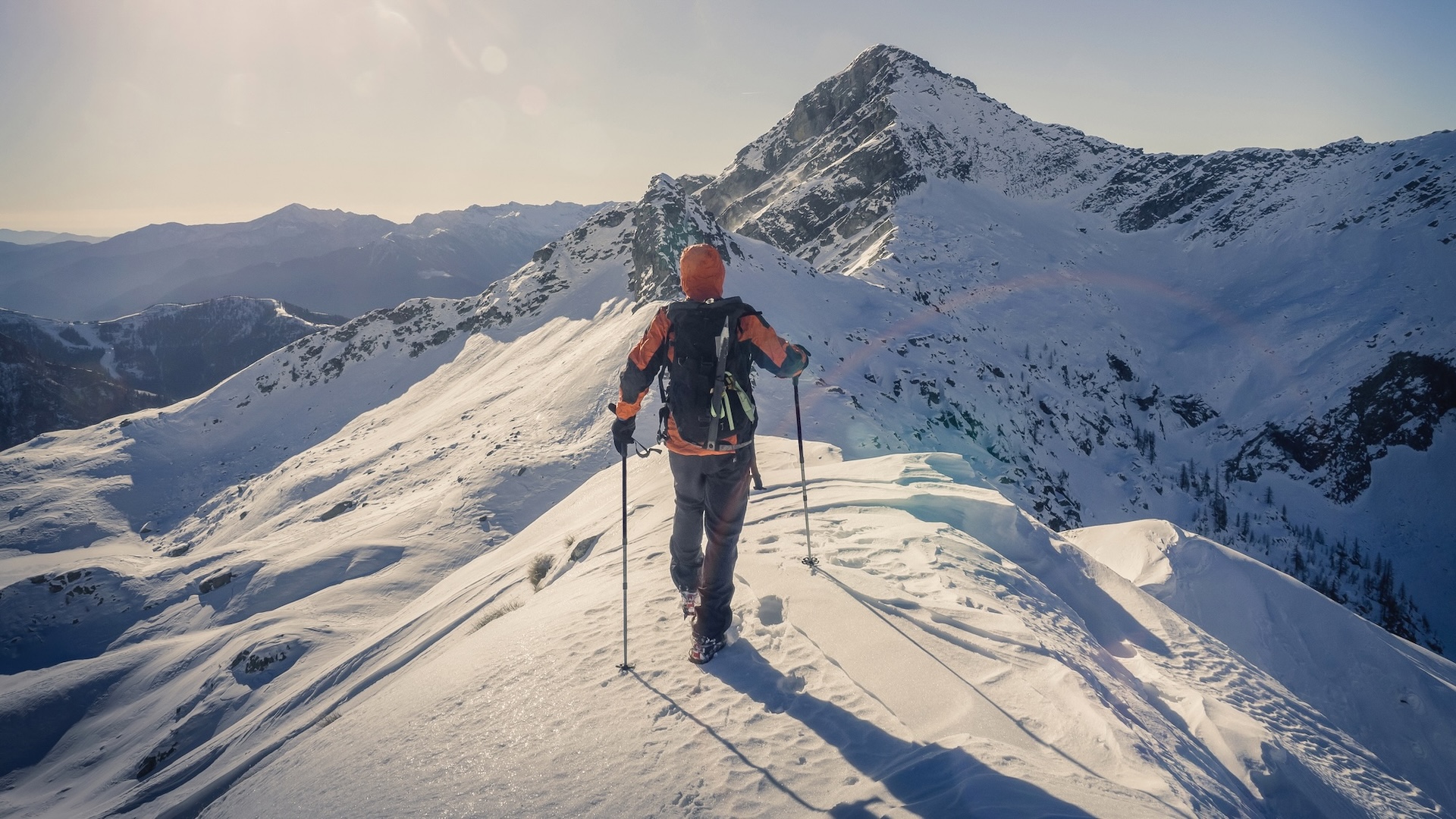
Winter brings a number of challenges for hikers, especially staying warm when the temperature drops, or there is rain, snow and ice. Becoming too cold on the trails may even lead to issues of winter hiking safety, such as Raynaud’s Syndrome, hypothermia and, worse still, a danger to your life.
There are plenty of winter hiking mistakes that people do make, but there are still many rewards for hitting the trails at this time of year and that includes maintaining good physical and mental health; enjoying beautiful snowy, or frosty views; spending time with like-minded people; and getting away from busy lives, especially around the festive period.
So, how can you keep warm on a winter hike – and what are the winter tips that other people have learned through experience? Here are my 17 expert tips for staying warm while hiking in winter – and advice on what to pack in your backpack when you head out during the colder months.
17 tips for staying warm while hiking in winter
1. Get the right footwear
Cold feet will leave you miserable at best and with potential frostbite complications at worst. The right choice of winter hiking footwear will depend on where you are going and the weather.
For warm feet, winter hiking boots will be better than shoes because the extra protection around the ankles helps to stop water, snow and ice from soaking your socks and feet.
Choose waterproof hiking boots for better protection from the wet. Keeping your feet dry is all part of maintaining warmth. There are boots with fabric uppers that have a Gore-Tex lining, however for greater water resistance, choose winter boots made with suede or leather.
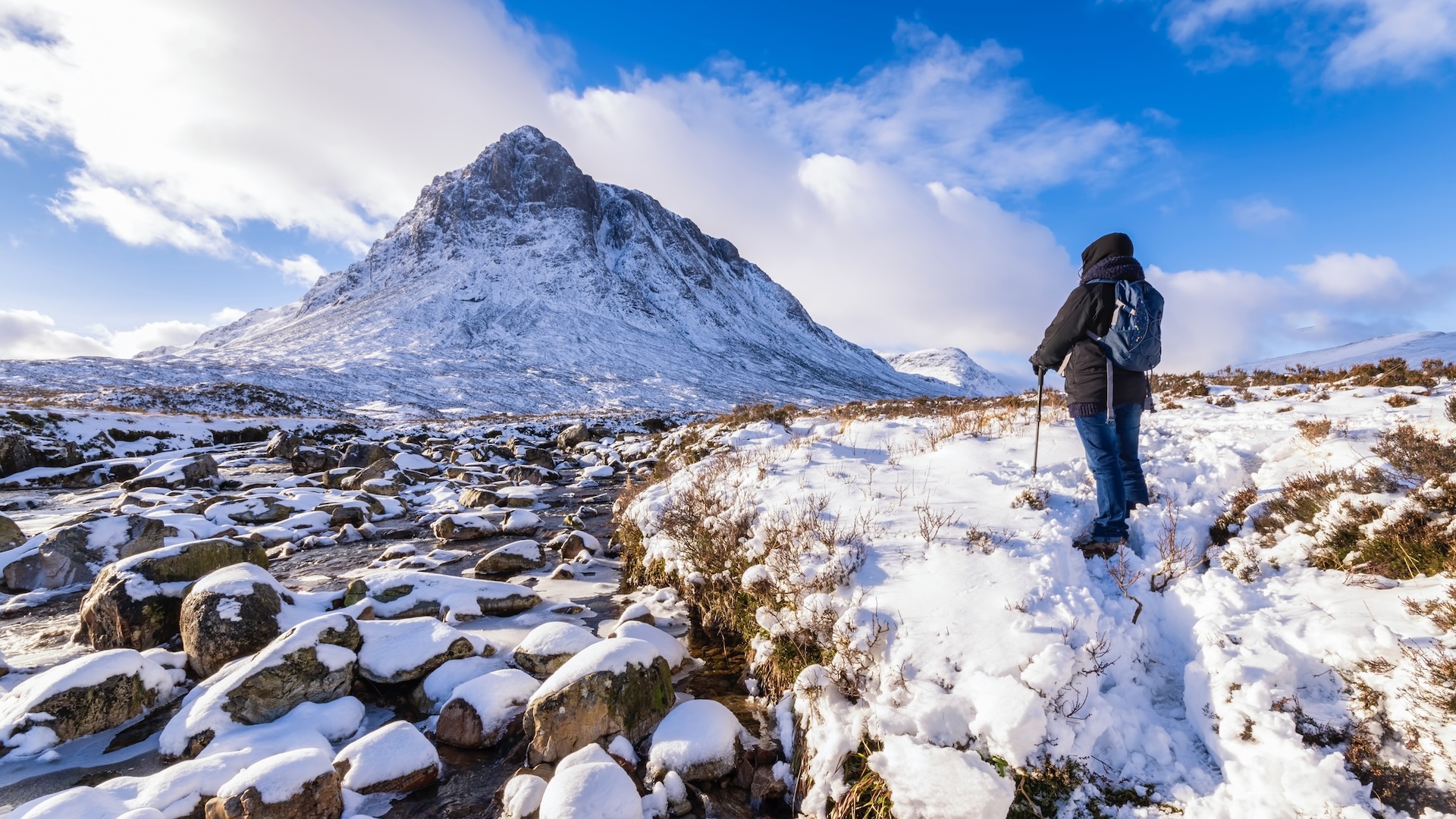
2. Wear winter hiking socks
In summer, hikers worry about the damp created by hot and sweaty feet but in the winter, the main concern will be cold feet. Choose hiking socks that are thick enough to keep your feet toasty while you walk.
All the latest inspiration, tips and guides to help you plan your next Advnture!
Dampness might still be an issue because even in winter feet do sweat so it’s a good idea to wear socks made of natural fibers, such as merino wool, rather than man-made materials. Merino is great for maintaining warmth even when damp and the wool also allows feet to breathe.
3. Add gaiters
In winter, gaiters provide an extra layer of protection around the top of your footwear. Remember that there is a high chance you will be hiking in rain or through snowy landscapes, which can cause water to ingress your boots.
Gaiters help to keep the wet and damp out of your boots. They also stop the damp creeping up the legs of your trousers.
4. Rain pants are your friend
Winter warm hiking pants, or leggings, are an obvious choice for warmth. Winter hiking pants will be made of a thicker fabric than summer hiking pants and may also have a fleece lining.
Some versions also have a water-repellent coating, which means you will avoid damp fabrics caused by moisture in the air.
If you only have summer hiking pants, pop on a pair of thermal leggings underneath, or put on your running tights first.
But our top tip for extra warmth is to add a pair of waterproof rain pants, or over-trousers. They help to block the cold wind and also protect you from rain or snow.
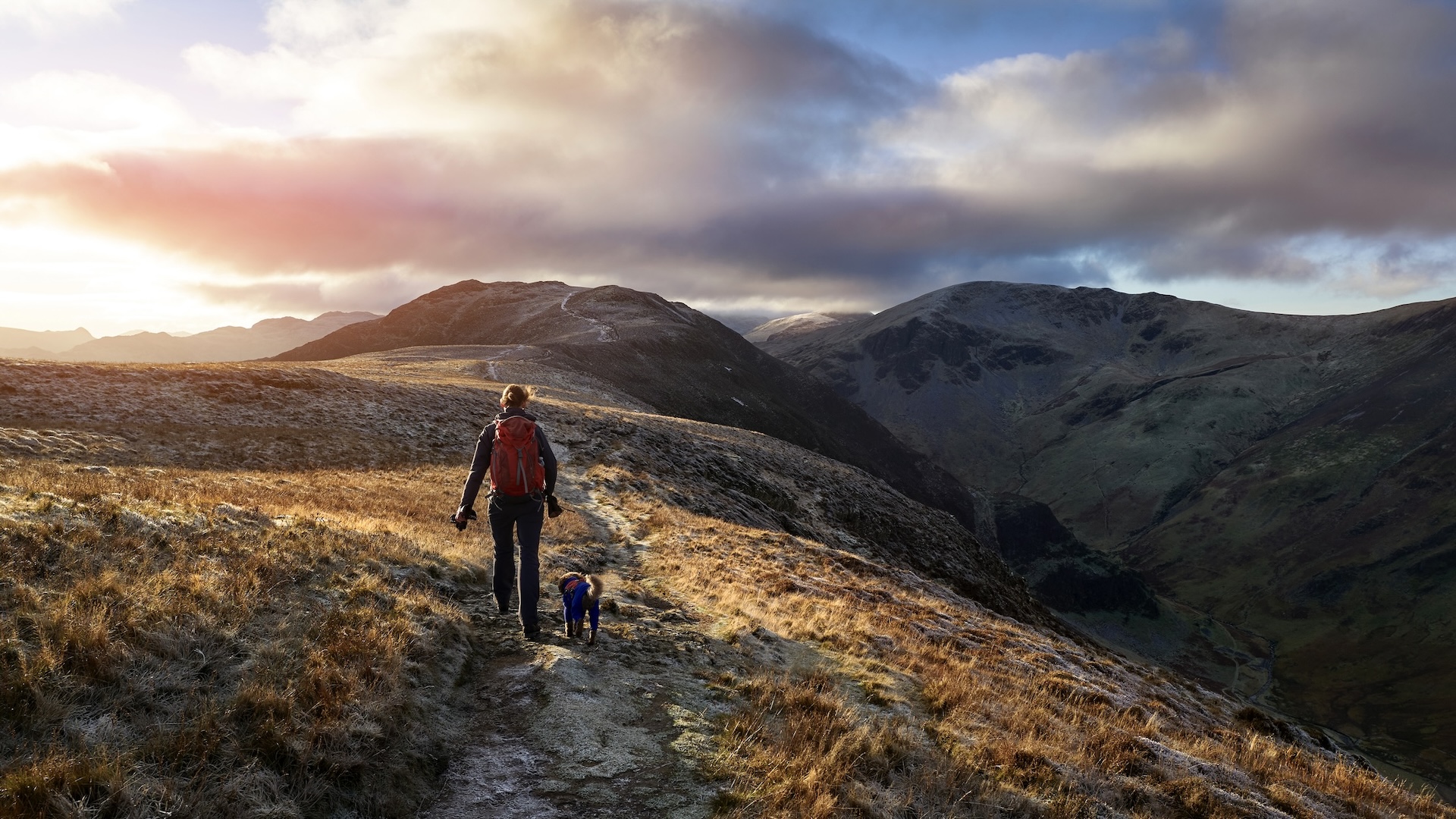
5. Maintain core warmth
Everyone feels warmer if their torso and core are cosy. The best plan is to wear layers of tops. Start with a neat-fitting thermal base layer to trap body heat at your core. Then layer on another top, such as a long-sleeved base-layer or fleece top. A lightweight insulated jacket will help to keep you warm, too.
The best protection against the cold while hiking in cold weather is a good quality waterproof jacket ensure you are winter ready. Waterproof fabrics, such as Gore-Tex, are great at keeping out a cold wind, as well as the rain.
6. Stay a-head of the cold
Winter hiking headwear is a given, but choose your products wisely. Look for hats or beanies that have extra insulation around the ears. Some hats will have warming ear flaps, or you could choose to go all in and wear a balaclava.
7. Don’t forget your neck and face
Areas of the body that are really prone to getting cold are around the neck and the face. There are different types and weight of neckwear and face covers that will keep your skin warm when it’s windy.
Start with a lightweight tube of fabric, such as a neck gaiter, which can be pulled up around the lower part of your face if conditions worsen.
You can also take an extra neck gaiter, especially one made of thicker fleece, and add this when conditions require it.
If snow or rain snow is blowing into your face, our tip is to wear ski goggles.
It can be a good idea to borrow kit from your skiing wardrobe for winter hiking.
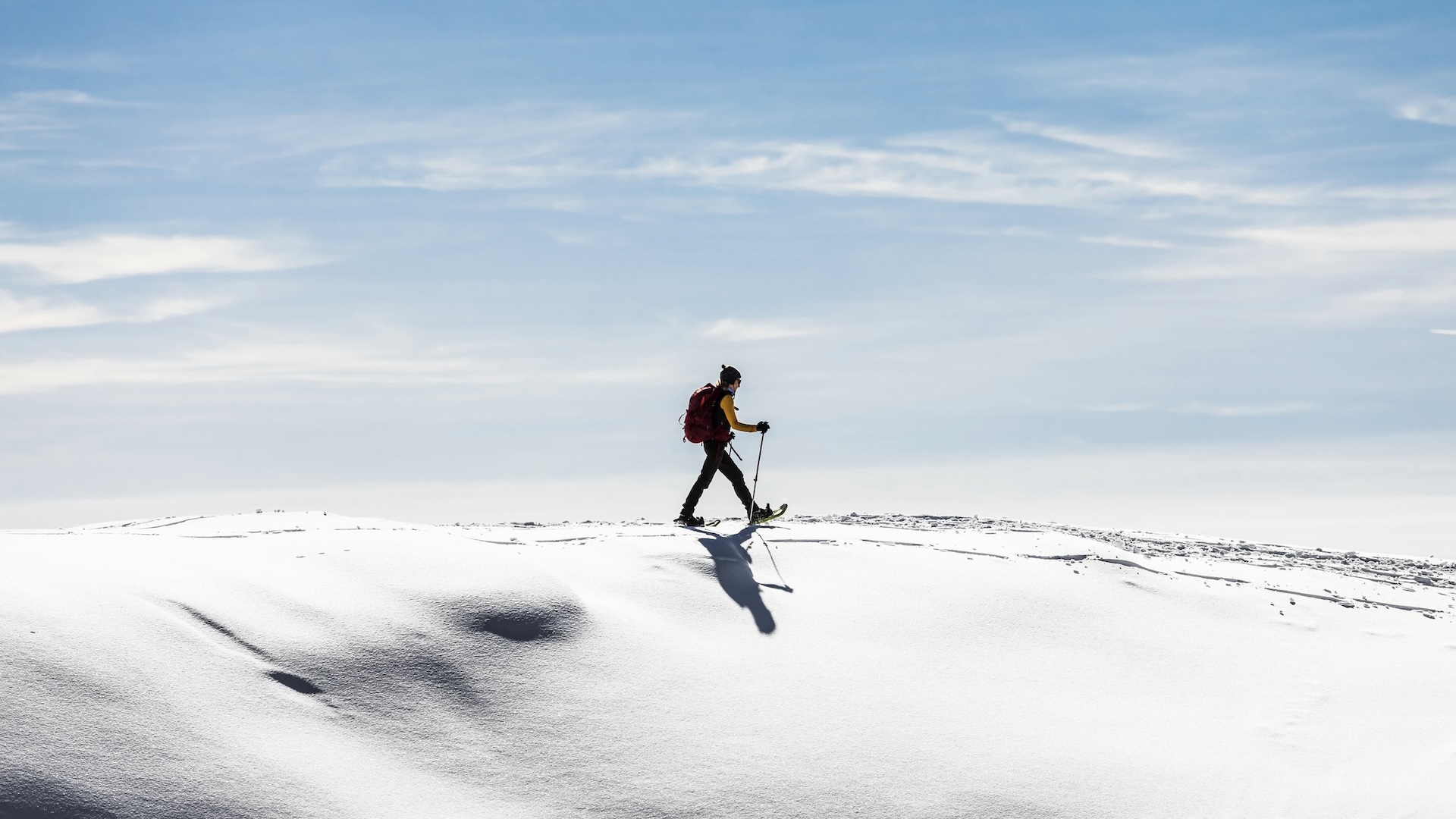
8. Pay attention to your hands
The hands are often the most prone to getting cold while winter hiking. We use our hands to open backpacks, access phones, find food and snacks and hold trekking poles, which are particularly useful when there is snow and ice on the ground.
There is little fat on the hands, too, and digits can end up freezing or numb.
This means that the hands are very much in need of protection. The first key item of kit for winter hikers should be a pair of gloves that can be worn as a base layer but also allow you dexterity, such as for phone use. Look for gloves with “contact” thumb and forefinger details.
If you can keep a thinner pair of gloves on at all times, you will hopefully maintain some warmth.
Then, add mitts on top. Mitts or three-finger gloves are great as an over-glove and also protect the digits by keeping the together for better warmth.
If you only want to wear one layer on your hands a good quality pair of insulated gloves or mitts are a must. Again, you could borrow these from your ski kit.
We also like the tip for using zip ties as revealed in our guide to winter hiking hacks.
9. Make sure essential kit is easy to find
Try to make it easy to find kit in your backpack so that you don't have to take off your gloves. It can be a good idea to stash items in small dry bags or in pockets. if you can remember where everything is, then all the better.
Your hands will not welcome being de-gloved so you can rummage around to find kit and especially if you need to take kit out the pack to find things in cold air or on frozen ground.
10. Always pack spare clothes
It’s vital that you pack more clothing than you think you might need. There will always be winter hiking days when the temperatures drop further than forecast or the wind picks up and you will be very grateful for access to extra clothing packed in your backpack.
11. Add hand-warmers
There are many different types of hand-warmers, including one-use disposable hand-warmers and rechargeable hand-warmers. They do not weigh much and can be a godsend when hands get really cold.
12. Take plenty of food and hydration
Our bodies need energy to stay warm and this means it’s crucial that you have enough calorie-rich food with you. Many hikers will tell you that they eat more food in the winter compared to summer.
Be watchful of your water supply. Water bottles and hydration bladders and tubes will often end up frozen so it’s a good idea to take an insulated flask of hot water or tea. Discover more expert tips on how to stop water freezing while winter hiking.
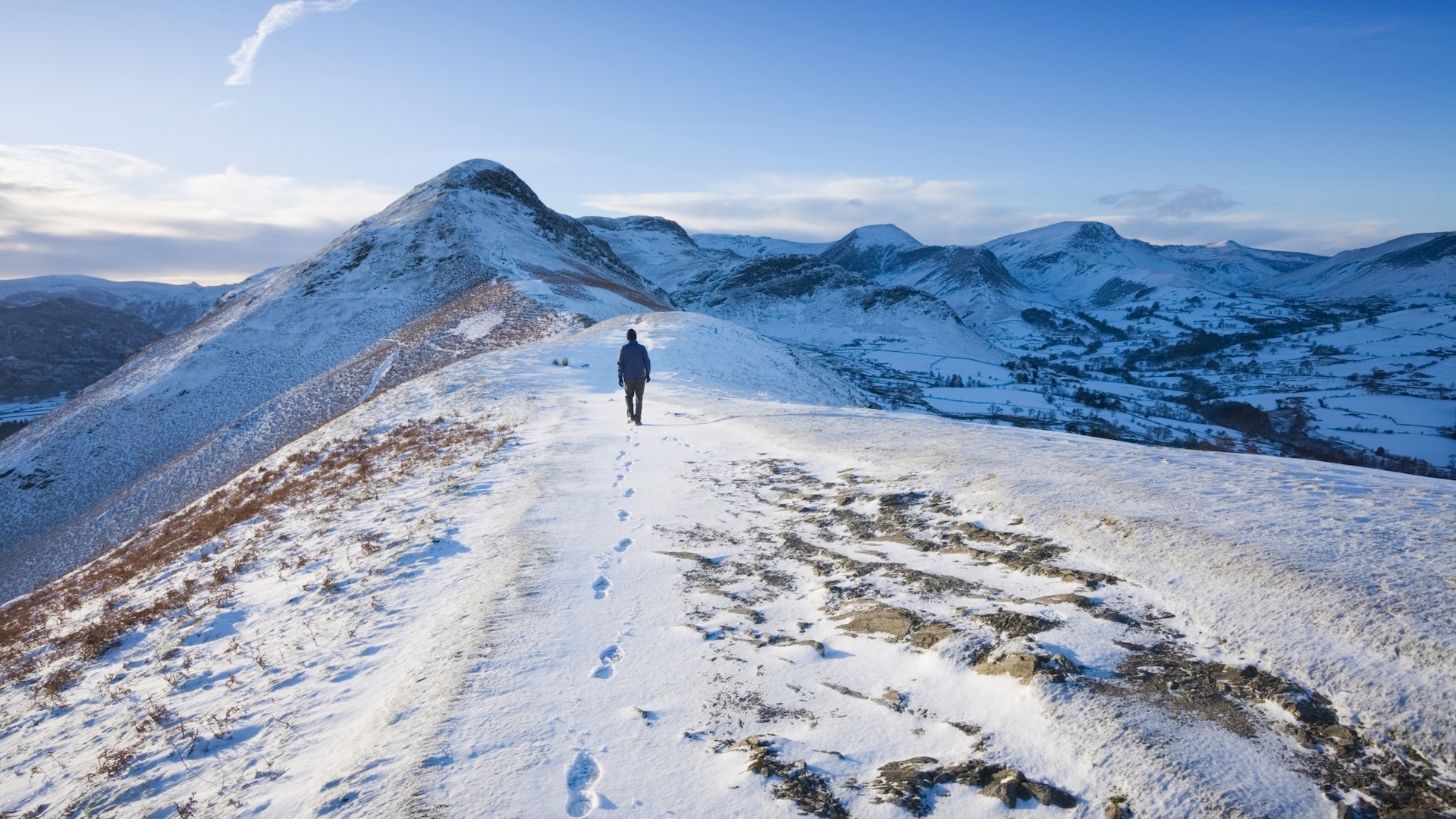
13. “Be bothered”
This is a phrase that is useful to have at the back of your mind when winter hiking. If you feel like you are too cold, or you are hungry or thirsty, you should always “be bothered” to stop and sort it. Leaving issues too late can end up being a disaster because it is often the case that if you do not address your cold or hunger as soon as you feel it, it can quickly end up being too late to do anything to properly warm up or regain vital energy.
14. Don't hang around
Every hiker needs to stop to eat, have a drink or change clothing layers but it's a good idea to keep this to a minimum of time. As soon as you start to feel chilly, it's time to move on again.
15. Look out for shelter
Every winter hiker will need to stop for food at some point. In some situations, you might need to stop to ride our a storm or similar. You may be lucky to find shelter, such as behind a large rock, in a shelter cairn or in a hut, but if you find yourself miles from anywhere, then a bivy sack or bothy shelter will provide much-needed protection from the elements.
16. Synthetic insulation or hydrophobic-down
When down insulation gets damp or wet it wil leave you cold. So, it's a good idea to make sure your insulated jackets for winter hiking are filled with synthetic insulation or hydrophobic down
17. Up your pace
Fast packing in winter is definitely an option and that usually means you will be moving at a faster pace, which will naturally keep you warmer. It might not always be possible to take off for a fast packing hike but there will also be times when you can. It will be very much dependant on the winter conditions and your experience.
Likewise, you can even enjoy a spot of winter camping with this guide.
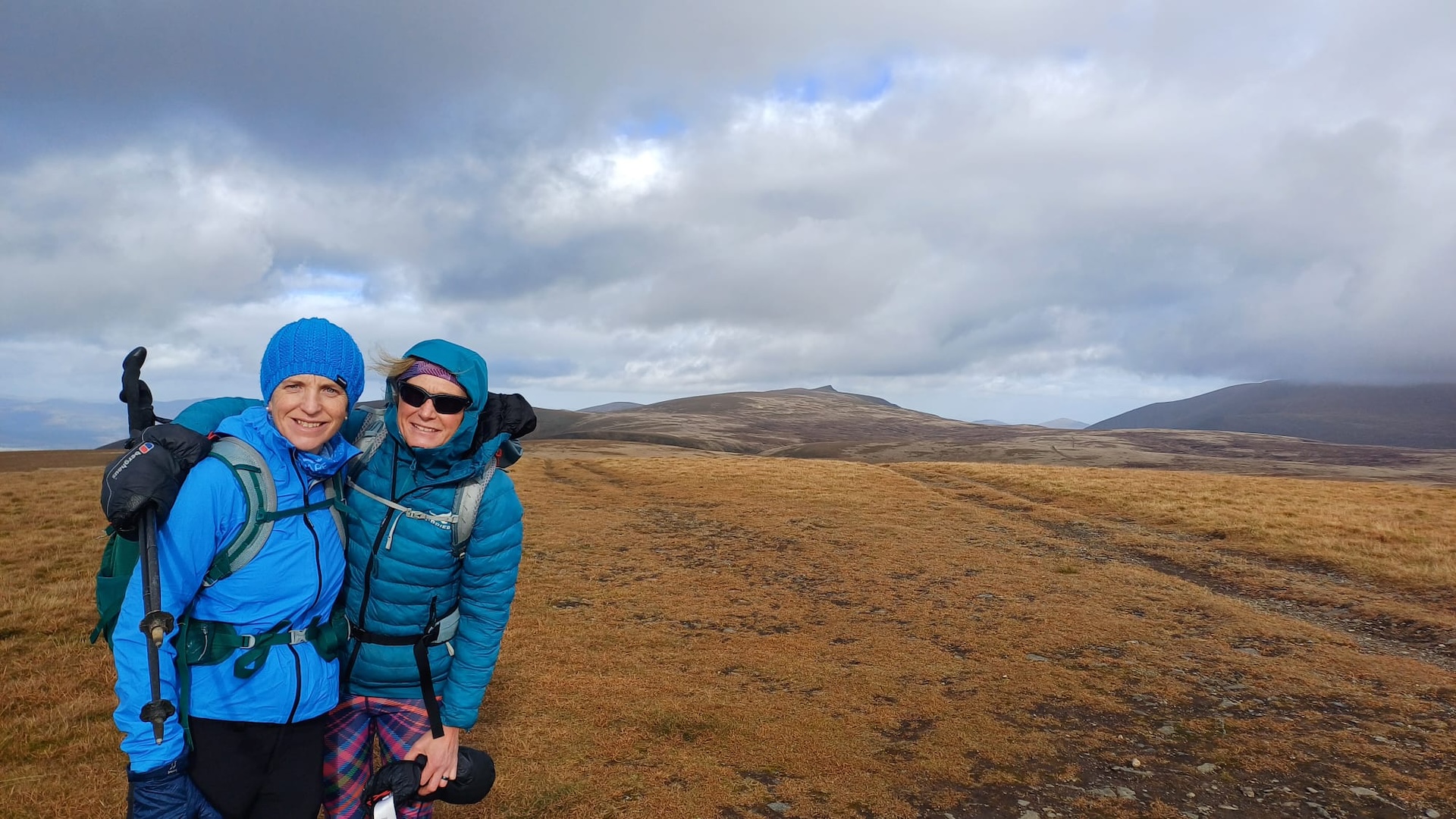
What to pack in your winter backpack for warmth
My winter hiking clothing starts with waterproof socks. I find these socks more warming than any other type of winter hiking socks. I also wear fleece-lined running tights and then layer a pair of Gore-Tex over-trousers on top.
To keep my upper body warm, I start with a long-sleeved skiing base layer. My favourite base layer is very long and tucks into my tights. On top of this, I add another long sleeved baselayer and then a lightweight insulated jacket, plus a winter Gore-Tex waterproof jacket.
I wear a neck gaiter around my neck and a fleece lined head buff to cover my ears.
I always wear hiking boots in winter and will choose from several pairs, depending on the ground conditions. If I am not wearing waterproof over-trousers, I then add hiking gaiters.
I have Raynaud’s syndrome so my hands are a priority for winter cold protection. I wear a base layer mitt (a pair of mitts that I borrow from my running kit wardrobe) and then add insulated mitts on top (these I take form my ski kit cupboard).
I also take waterproof over-mitts. These are a simple waterproof glove that can be worn over the top of fabric gloves and provide a surprising amount of protection from the cold, as well as the wet.
Then to winterise my backpack, to make sure I am warm while hiking, I add rechargeable hand-warmers, rechargeable heated mittens, spare socks, an extra warm synthetic insulated jacket, an extra fleece jacket, a bothy shelter, plenty of food (both savory and sweet), a flask of hot water and a flask of tea.
All this kit goes into my winter-sized backpack, before I add other essential items such as a personal locator beacon, crampons or micro-spikes, an ice axe or snow shoes if conditions require either, trekking poles, smartphone, map and compass, plus a small first aid kit.

Fiona Russell is a widely published adventure journalist and blogger, better known as Fiona Outdoors. She is based in Scotland and is an all-round outdoors enthusiast with favorite activities including trail running, mountain walking, mountain biking, road cycling, triathlon and skiing (both downhill and backcountry). Aside from her own adventures, Fiona's biggest aim is to inspire others to enjoy getting outside and exploring, especially through her writing. She is also rarely seen without a running skort! Find out more at Fiona Outdoors.
